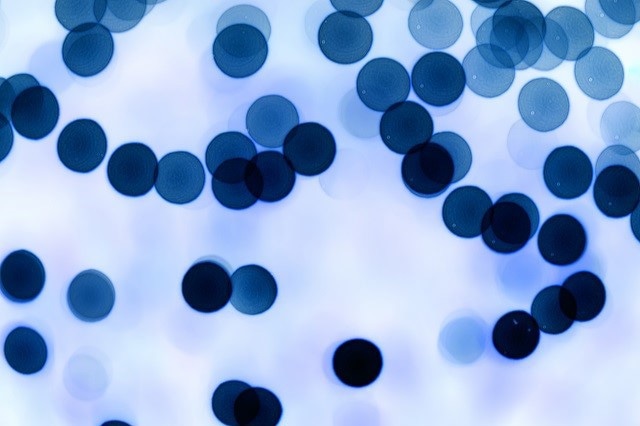Spectroscopy is a technique that is widely used to determine the identity, composition and properties of samples.

Gudjon E. Olafsson | Shutterstock
Spectroscopic methods exploit the interactions between matter and electromagnetic radiation in order to probe molecular fine structure. The way samples interact with radiation reveals a lot of information about its nature; making spectroscopy a useful tool for both qualitative and quantitative analysis.
Broadly speaking, spectrometers work by focusing a light beam onto a sample which then interact together, resulting in effects such as scattering or absorption. A computer connected to the spectrometer then processes the data, e.g. by Fourier transformation, to produce a spectrum.
Analysis of the spectrum can be used to reveal characteristics of the sample. For example, specific chemical bonds will absorb at specific wavelengths and this can be observed in the spectrum. More complex analysis is also possible using methods such as Raman spectroscopy which can be used to determine the symmetry and crystal structure of molecules.
Nonlinear spectroscopy
Many types of spectroscopic techniques are available to researchers. Conventional spectroscopy, such as absorption and emission spectroscopy, is linear and uses one incident light beam. In this case the observed light/matter interactions tend to be weak and the spectra produced can be ambiguous.
Nonlinear spectroscopy, such as Coherent Anti-Stokes Raman Scattering and Stimulated Raman Scattering, uses two or more light beams. Many nonlinear spectroscopic techniques exist which vary the lights optical parameters such as its amplitude, frequency, polarization and phase. This allows different observations on the resulting spectra to be made, allowing different properties of the sample to be studied.
There are several advantages of using non-linear techniques;
- Nonlinear spectroscopy uses multiple sources of light, meaning more information is obtained from samples tested using a non-linear technique. This means nonlinear spectroscopy provides higher resolution data than linear spectroscopy.
- Nonlinear spectroscopy can be used to study interfacial and surface processes
- Nonlinear spectroscopy can be used to study interactions in areas of the electromagnetic spectrum not accessible to linear spectroscopic methods.
- Unlike linear spectroscopy, nonlinear spectroscopy is also useful for studying dynamic processes as time-resolved spectroscopy is possible. This is typically with a pump and probe technique.
- Nonlinear spectroscopy can be used to understand nanoparticles and their unique optical properties.
Nanoparticles

Gotzilla Freedom | Shutterstock
Nanoparticles represent a relatively new scientific field. The term nanoparticles describes particulate matter with diameters of a billionth of a meter in size or less. High levels of investment surrounds nanoparticle research due to their conventionally unusual behaviour.
This unique behaviour makes nanoparticles candidates to be used in a wide range of applications; from the practical, as electrodes in batteries, to the exciting, as stimulants for bone growth in injured patients. Gold nanoparticles have recently been used in cancer diagnosis.
Learning more about nanoparticles can assist scientists in the design of new materials with tailor-made features.
Due to the nanoscale size of nanoparticles classical physics cannot be used to accurately describe their behaviour, and instead they are governed by the laws of quantum mechanics. This means that nanoparticles can behave in strange and unexpected ways. For example, materials which are an insulator in their bulk form may behave as a semi-conductor on the nanoscale.
This behaviour means individual nanoparticles behave differently from their bulk equivalents.
The Challenge of Measuring Nanoparticles

vitstudio | Shutterstock
Nonlinear spectroscopy can be used to study single nanoparticles and determine exactly how they behave. However, the preparation of nanoscale samples themselves presents its own challenges.
Spin-coating aqueous nanoparticle solutions to create an evenly distributed sample for spectrometry is currently the most popular method. Spin-coating is more economical and less time-intensive than other methods and gives a more uniform dispersion than methods such as drop-coating.
Using the correct spectroscopic set-up is also important because single nanoparticles display little absorption. Instead, measuring the scattering of radiation as it passes through the nanoparticle sample is more useful as the results obtained are more pronounced. Nanoparticles with a diameter of 30-100 nm produce strong scattering.
Metallic nanoparticles are of particular interest to researchers as their unique optical, electromagnetic and thermodynamic properties make them useful for applications ranging from drug administration to optical data storage. The linear properties of metallic nanoparticles have been studied extensively but their nonlinear optical properties remain poorly understood.
In order to study these properties effectively the weak signal from the nanoparticles must be amplified. This can be achieved using plasmonic excitation to greatly increase the optical response of metal nanostructures. Optical Antennas can also be used to increase signal amplitude by a factor of 10. They work via a similar mechanism to their radio-frequency counterparts by enhancing the light-matter interactions in their feedgap.
Nonlinear spectroscopy can also be used to complement linear spectroscopy. For example, Baida et al. (2010) used linear spectroscopy to characterise a single silver nanoparticle’s size and shape before performing time-resolved nonlinear spectroscopy on the particle. This allows a full optical investigation into a single nanoparticle's acoustic response.
Symposia at Pittcon 2016

This year’s Pittcon, the world’s largest annual conference and exposition for laboratory science, will take place between the 6th and 10th of March in Atlanta, Georgia. With an impressive technical program, the event will feature more than 2000 presentations. Among these, topics will include the measurement of nanoparticles using Raman spectroscopy and dynamic light scattering (DLS) and also the environmental and energy applications of nanomaterials.
We will hear about how spectroscopic techniques can be used to accurately determine the size, zeta potential and behaviour of nanoparticles and how this information can be used practically in applications such as electronics, medicine and manufacturing. Talks will also be given on using nanoparticles to enhance Raman signals via Surface Enhanced Raman Spectroscopy (SERS).
Among the 683 exhibitors at Pittcon will be Thermo Fischer Scientific, world-leaders in the field of analytical chemistry. They will be showcasing the world’s largest portfolio of analytical instruments. Their equipment can be found in labs all over the globe and ranges from chemical and physical equipment, such as mass spectrometers and radiometers, to the microbiologic and diagnostic tools essential for the life sciences.
Particle Sizing Systems, specialists in the measurement of particles ranging from the micro to the nanoscale, are also exhibiting at Pittcon. Their products use a single particle optical sizing (SPOS) technique which can be used to quickly and accurately determine a single nanoparticle’s size and the size distribution of a mass sample.
Also exhibiting will be Bruker, global manufacturers of sophisticated and cutting-edge spectrometers. Their equipment can be used for the comprehensive analysis of nanoparticles using techniques such as Raman scattering, x-ray diffraction (XRD) and total reflection x-ray fluorescence (TXRF).
References
University of Geneva - Nonlinear Spectroscopy for Ultrafast Processes
Journal of Raman Spectroscopy - Ultrafast nonlinear spectroscopy of silver nanoparticles
Farraday Discussions - Linear and non-linear spectroscopy of microparticles
Physical Review B - Experimental investigation of nonlinear optical properties of Ag nanoparticles
Annual Review of Physical Chemistry - Nonlinear Spectroscopy
Journal of Advanced Nanoparticles- Gold Nanoparticles
Nanowerk - Studying Nanoparticles One at a Time
Nature Communications - Nanoantenna-enhanced ultrafast spectroscopy of a gold nanoparticle